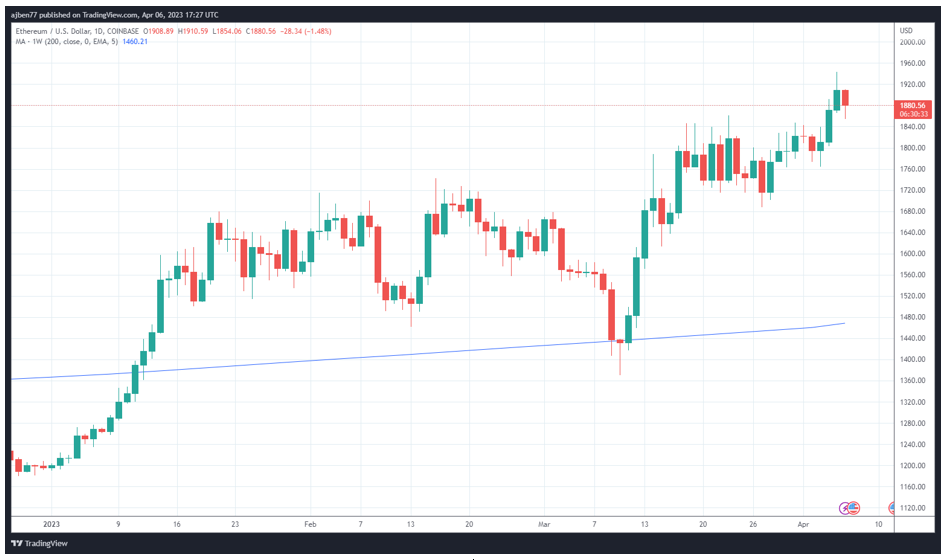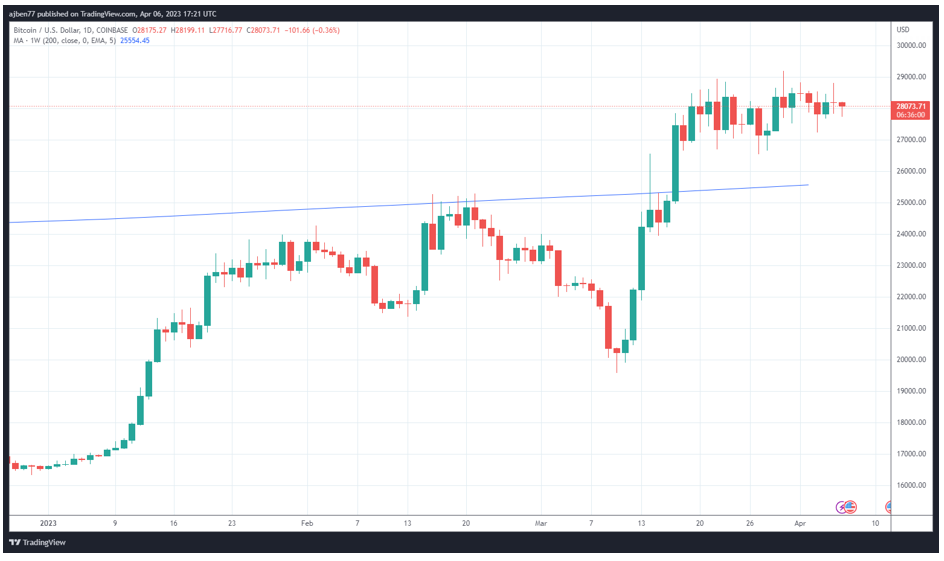Riding the Debt Wave: Crypto's Golden Opportunity
 |
| By Juan Villaverde & Alex Benfield |
Ah, the sweet irony of temporary government programs.
As economist Milton Friedman once said, "Nothing is more permanent than a temporary government program." And how right he was!
Just take Nixon's "temporary" suspension of the U.S. dollar's convertibility to gold. It led to a new financial system with flaws we are still dealing with 50 years later.
When the tie between the greenback and gold was severed, the financial system needed a new reserve asset — a safe place for nation-states and financial institutions to park their capital without worrying about price risk.
After some turbulence in the 1970s, U.S. government debt — i.e., Treasurys — became the new reserve asset, marking a historic change in the financial world. However, with this change came a new issue: The system's risk-free reserve asset now had counterparty risk.
Fast forward to 2023, and the U.S. has accumulated a staggering debt of 312% of GDP.
With such a mountain of unpayable debt, how risk-free is the U.S. Treasury as a reserve asset?
But hey, Uncle Sam can always print money to pay the bills, right?
That uncomfortable truth did not cause much worry until 2022, when the Federal Reserve started raising interest rates and inflation crept back into the picture. Turns out, printing money to repay debts is just default in disguise.
Cue the exodus from U.S. Treasurys and the dollar. The BRICS nations — Brazil, Russia, India, China and South Africa — are already exploring alternative currencies, and foreign buyers of U.S. Treasurys are basically on strike.
So, who is left buying? The U.S. government itself — via the Fed — leading to a less-than-ideal cycle of debt monetization … which in turn undermines the dollar and U.S. Treasury's risk-free status.
This monetization led to the great bull market in investment assets, as well as the birth of crypto as an alternative to the never-ending debt pile and currency debasement.
Welcome to the permanent bailout economy!
The Fed, having had enough of the situation by 2022, initially resisted buying more Treasurys. However, market forces left it with no choice.
In March, it was compelled to buy $400 billion worth of Treasurys in just two weeks. This was a striking reversal of their previous stance, highlighting the precarious nature of the financial system.
Even though the Fed was initially playing hard to get with Treasurys, market realities gave them a not-so-gentle nudge. To save the day from further chaos, the Fed was forced to step in.
This flip-flop highlights the Fed's dance with the ever-growing U.S. debt, as they try to maintain their balance in the constantly shifting economic landscape.
Now we have entered a new stage in the permanent bailout economy.
The once-free U.S. bond market is no more. Instead, the Fed's new Bank Term Funding Program ensures there is always a buyer for U.S. Treasurys.
So, no worries if your Treasurys are worth only 70% of the purchase price — the Fed will print money to make you whole!
As we witness the beginning of the end of the fiat money system, BTFP puts the Fed on the hook for a staggering $4.5 trillion in bond buying … making COVID-19-era money printing look like child's play.
Remember Friedman's observation, though: This "temporary" program will likely become permanent practice, leading to the largest debasement of currency in our lifetimes.
But hey, at least crypto will thrive!
Just look at what a little bit of money printing did to crypto prices in early 2023. Now imagine the impact of 10, 20, or even 30 times that amount of money printing in the coming years.
The bull market is just getting warmed up, folks! I'll let Alex take over from here …
Reigniting the Printing Presses Is Likely to Light a Fire Under Crypto
Indeed, the last round of COVID-19 money printing spurred the largest influx of wealth into the crypto economy of all time.
If Juan is right and the central banks are gearing up to print again at an even larger scale, the effects on the crypto market could be tremendous.
If you can remember way back in March 2020, most markets dumped incredibly hard on the initial news of the COVID-19 lockdowns. In fact, Bitcoin (BTC, "A-") fell from $8,000 to under $4,000 in a single 24-hour period.
However, what followed was a Bitcoin bull market that took the price of BTC from $4,000 all the way to $64,000 in just over two years. That is a 16x return to your initial investment.
The central banks are just now starting the next round of money printing to dig themselves out of their current, deeper financial holes.
How much money will they print? Nobody knows. But we can guess what Bitcoin's reaction will be.
For now, though, the crypto market appears to be treading water as prices have not moved much in the past three weeks. The market appears to be waiting for some sort of catalyst before it makes its next move.
Currently, BTC is trading right around $28,000 and has been since mid-March.
Meanwhile, Ethereum (ETH, "B") has had a slightly better week. It jumped above resistance at $1,850 and set a new yearly high yesterday just above $1,940.
This month, investors are awaiting the big Shanghai upgrade that will finally allow Ethereum stakers to unstake their coins at will. The market seems to be undecided on if that is a bullish feature or not.
While it could go either way in the short term, I firmly believe that the ability to stake and unstake will lead to many more people deciding to earn a yield on their ETH in the medium and long term.
For now, the $2,000 resistance level looms overhead.

Click here to view full-sized image.
Personally, I get the sense that a big move is coming sometime soon. After all, the market does not tend to sit at one level for too long.
But for now, remain patient and enjoy your weekend.
Best,
Juan & Alex


